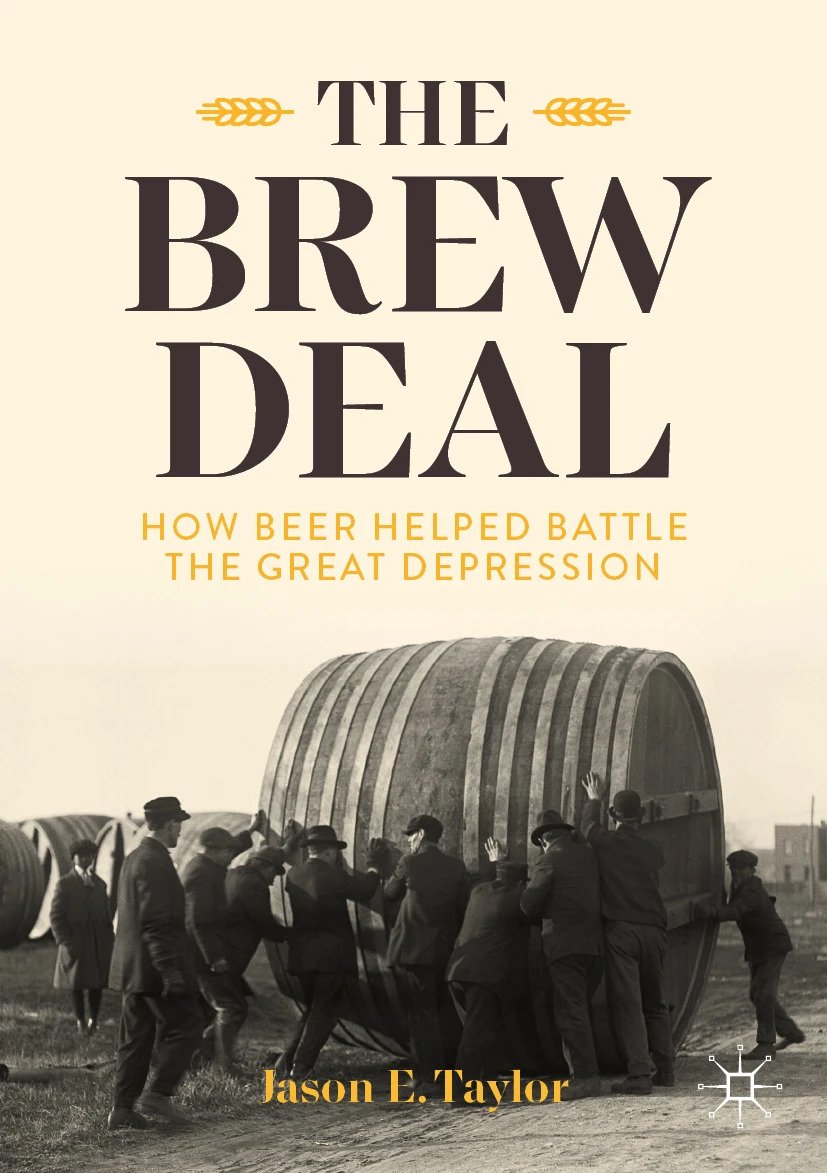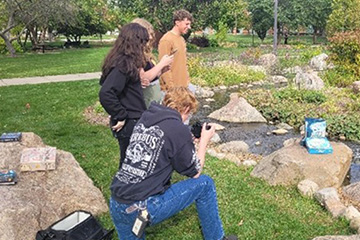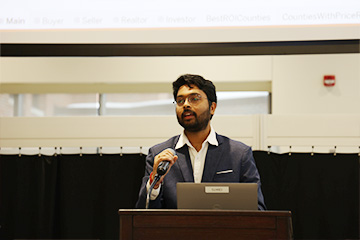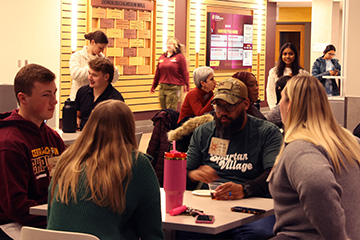Prohibition’s impact and beer’s economic revival
Jason Taylor explores the surprising economic ripple effects of beer’s legal return from Prohibition in his new book, The Brew Deal.

In his latest book, The Brew Deal: How Beer Helped Battle the Great Depression, author, economist and Central Michigan University faculty member Jason Taylor dives into the untold story of how beer helped spark an economic revival during the Great Depression. From the energetic celebrations of “New Beer's Eve” to the unexpected psychological boost beer brought to struggling communities, Taylor explains the profound impact of legal beer’s return after 13 years of Prohibition in the spring of 1933.
We sat down with Taylor as he shared anecdotes from his research, the fascinating history of the brewing industry, and the compelling reasons why beer became a symbol of renewed hope and optimism during one of America’s darkest periods.
Do many people realize that the end of Prohibition was gradual?
“That’s exactly what got me into this topic. I was researching the economic recovery that began in 1933. The economy had been declining sharply from 1929 to 1933 and then there is this amazing turnaround. While researching the causes, one of my graduate assistants found a New York Times quote about beer loosening purse strings and boosting morale. At first, I assumed that Prohibition must have ended by then. But then I looked it up and the 18th Amendment’s constitutional Prohibition wasn’t repealed until December 1933.”
So how could beer become legal when the nation was still under constitutional Prohibition?
“The Prohibition amendment outlawed ‘intoxicating liquors’ which the government initially defined as anything above 0.5%. In April 1933, the threshold of what the government deemed legally intoxicating was raised to 3.2% alcohol by weight, which is 4% by volume. Incidentally, most light beers today come in right around this alcohol content. This was news to me—someone who has widely studied this era of history—and it is not widely known. This discovery opened a whole area of research for me.”
Tell us more about your background? How does your focus on economics connect to your research?
“I’m an economist specializing in economic history, with a particular focus on the Great Depression of the 1930s and Franklin D. Roosevelt’s New Deal policies. I’ve been working in this area since graduate school. It is such a fascinating time as FDR engaged in many different policy experiments, some of which worked well while others failed.”
What happened to breweries during Prohibition?
“The majority of them sat completely idle gathering cobwebs. However, some pivoted to making ice, malt syrup for baking, or even cheese. Several held on by producing non-alcoholic beer, root beer or ginger ale.
Of the 1,400 breweries in operation just prior to Prohibition, around 200 managed to survive intact. When legal beer returned on April 7, 1933, there were 133 breweries licensed to sell beer. These were the ones that had been actively producing non-alcoholic beer and hence they were ready to jump back into full beer production as soon as the law changed. Anticipating the legal change which had been signaled in the election campaign of 1932, many breweries kept vats of beer ready, which was perfectly legal as long as they said that their intention was to dealcoholize it before selling it. That’s how we had a decent supply of beer on hand the night it became legal.”
That must have been a wild night when beer returned.
“It has been called the greatest beer night in history. On the evening of April 6, people gathered around breweries waiting for the clock to strike midnight. At Anheuser-Busch, there were 30,000 people outside. Whistles blew, hats flew into the air, and trucks carrying beer rolled out with police escorts to send it to various watering holes. Smaller breweries had crowds of 500 to 1,000 people, but the celebrations were just as intense. It was truly like New Year’s Eve—a massive celebration counting down to midnight—but they called it New Beer’s Eve. People were singing songs like ‘Sweet Adeline’ and ‘Happy Days Are Here Again’ as they toasted to the return of legal beer.”
Were people drunk on the night the rules were relaxed, when beer was legalized again?
“Surprisingly, no. Several city police districts reported no arrests for intoxication on April 7—something they hadn’t seen in years. During Prohibition, the alcohol consumed was often hard liquor rather than beer, simply because it was more efficient for bootleggers to produce and transport spirits. That meant people were typically drinking much stronger beverages. It was widely commented that the lack of arrests for unruly drunken behavior on April 7 suggested that the government was right to declare 3.2% beer non-intoxicating.”
Did you find any particularly memorable stories during your research?
“One of my favorites is a letter to home from a New Yorker describing how, within a week of beer’s return, stores were crowded, streets were bustling, and there was a profound sense of optimism and a new hope. This letter really captures the psychological impact that beer’s legalization had on the economy.
In the book I also relay literally dozens of colorful stories about how different cities and states celebrated beer’s return. Michigan’s state law delayed legal beer until 6 p.m. on May 10. But even in those places where New Beer’s Eve was delayed by state law, the party was every bit as wild. Over 30,000 people attended a celebration hosted by the American Legion at Detroit’s convention center. Joseph Stroh, whose brewery provided the beer, poured the honorary first glass and the celebration lasted until 2 a.m. No doubt, the New Beer’s Eve chapter was my favorite one to research and write. Incidentally, April 7 is now celebrated annually as National Beer Day in honor of the events of 1933.”
You’ve written several articles on beer legalization. How does this book differ from your academic work?
“Most of my academic publications are dense with statistics and econometrics. This book is written for a general audience. It ties my past research into a narrative without the jargon or technical analysis. I wanted to tell the truly fascinating story of beer’s return and its economic and cultural impact in an engaging way. There are anecdotes, pictures, and stories that make the book accessible while still being informative. For example, I explore the importance of how more than 100 breweries financed their return by issuing IPOs and how beer’s legalization contributed heavily to the rapid economic recovery in 1933, but I present these in a highly accessible and, I hope, interesting way.”
Were there economic benefits beyond the breweries themselves?
“Legal beer created jobs not just in breweries but also in industries such as trucking, glass manufacturing, and brewing equipment. Reports even showed increased sales of playing cards, chairs, and other goods associated with socializing. Lumber prices, for instance, rose due to the demand for wooden kegs, and even the sales of chairs increased as pubs and restaurants prepared for more patrons. But I make the case that the largest economic impact of beer’s return was indirect. By boosting the nation’s spirits, it also lifted the economy. Optimism is perhaps the greatest economic stimulus out there.”
Can you tell us about the event celebrating your book launch and the custom beer Summit is creating for it?
“Absolutely! The event will take place on Tuesday, January 21 at 6 p.m. at Summit Smokehouse and Tap Room in Mount Pleasant. The evening will include a short talk, some Q&A, and I’ll be signing books as well.
I’m very excited that Summit is crafting a special beer which will be released at the event. The beer is going to be called "Roosevelt’s Brew Deal Lager"—a nod to both the book and the historical context. It’s designed to reflect the flavor and style of the era while being something guests can enjoy a couple of without, well, overindulging since its 3.2% alcohol by weight. I think it’s a fun way to connect the book’s themes to the event itself. I hope people come early, grab dinner, and have a great time celebrating this unique piece of history.
And by the way, if you buy a book I’ll buy you a pint of 3.2% beer.”
Taylor’s book, The Brew Deal: How Beer Helped Battle the Great Depression, is available for purchase at Sleepy Dog Books in Mount Pleasant and can be ordered from Amazon or wherever books are sold. Whether you're interested in history, economics, entrepreneurship, or the untold stories of Prohibition, this book provides a unique perspective on how beer helped shape a pivotal moment in America’s past.




